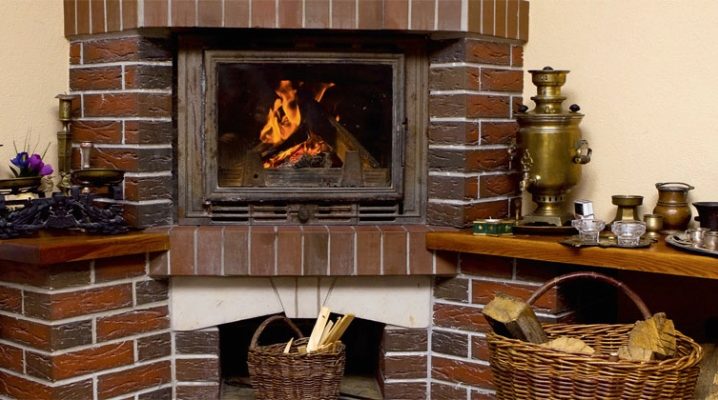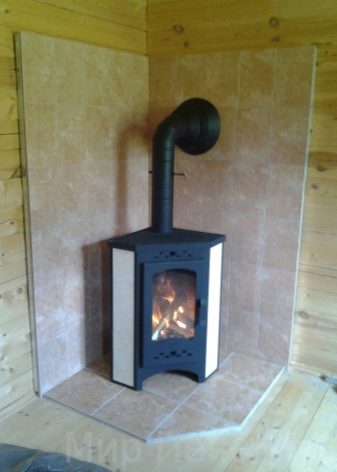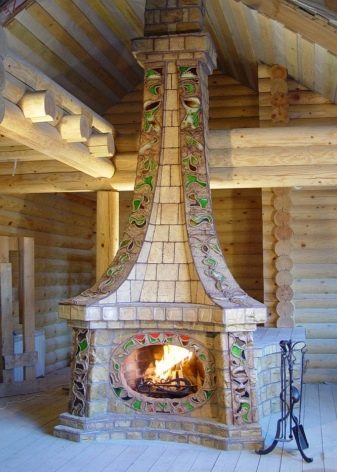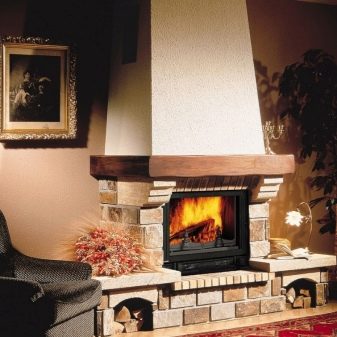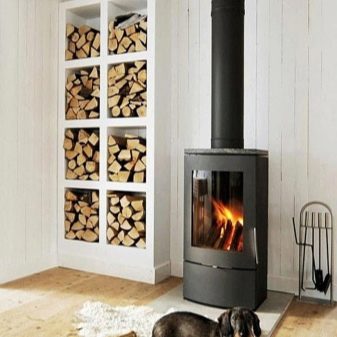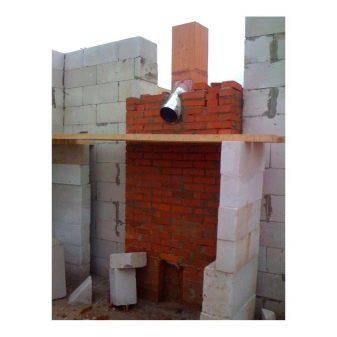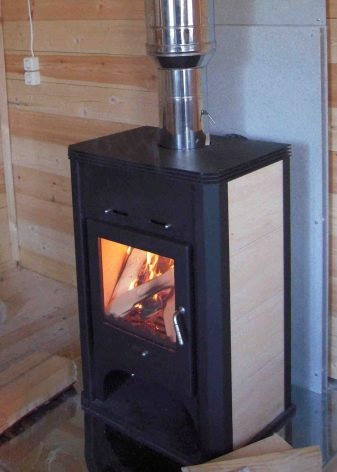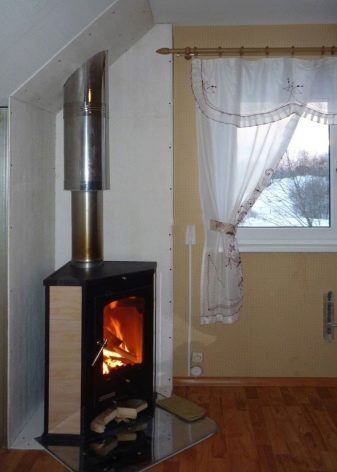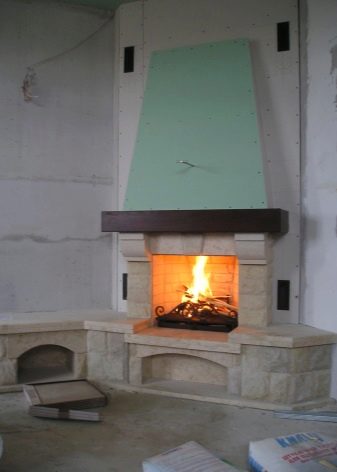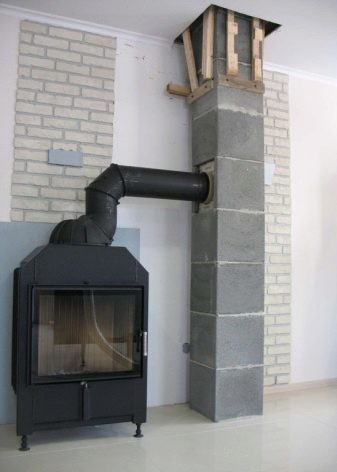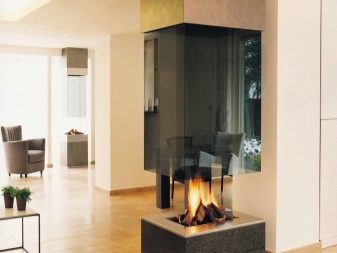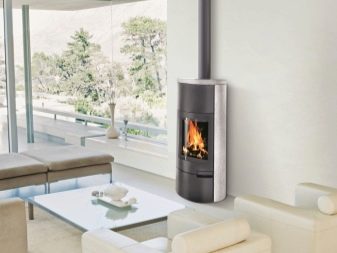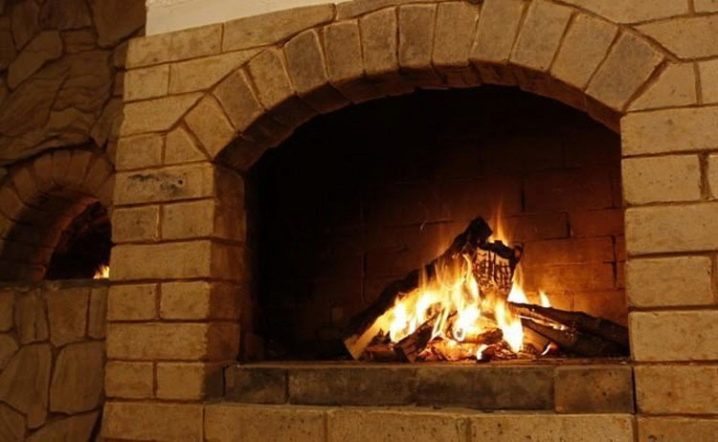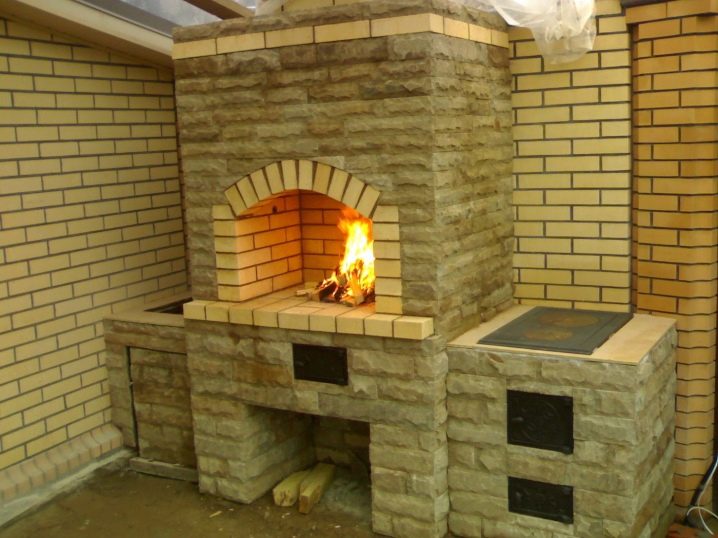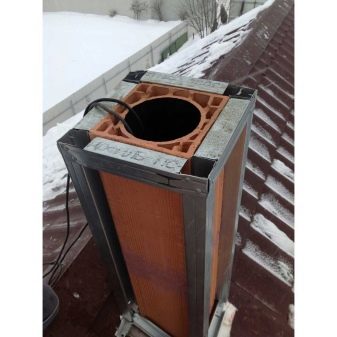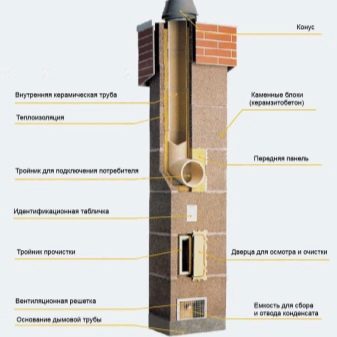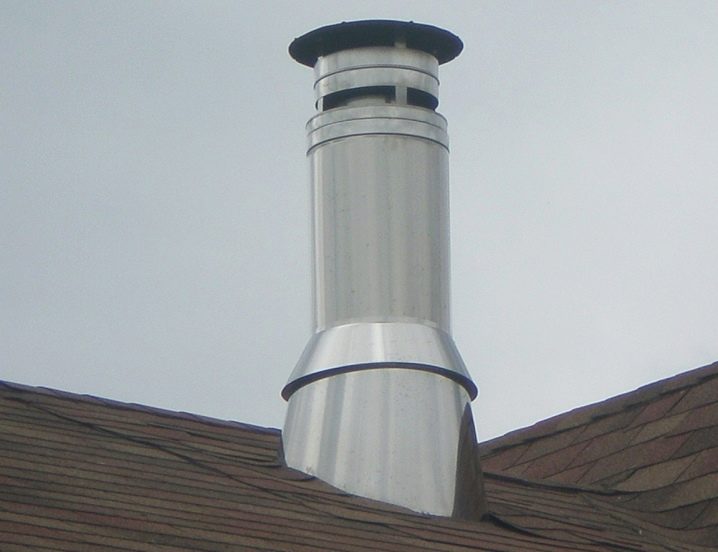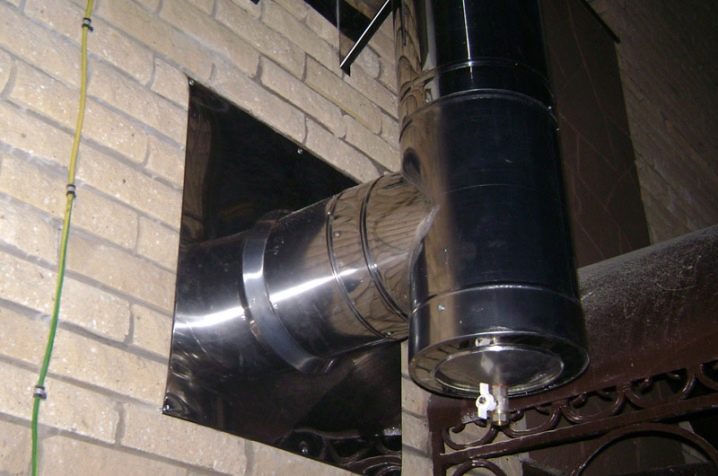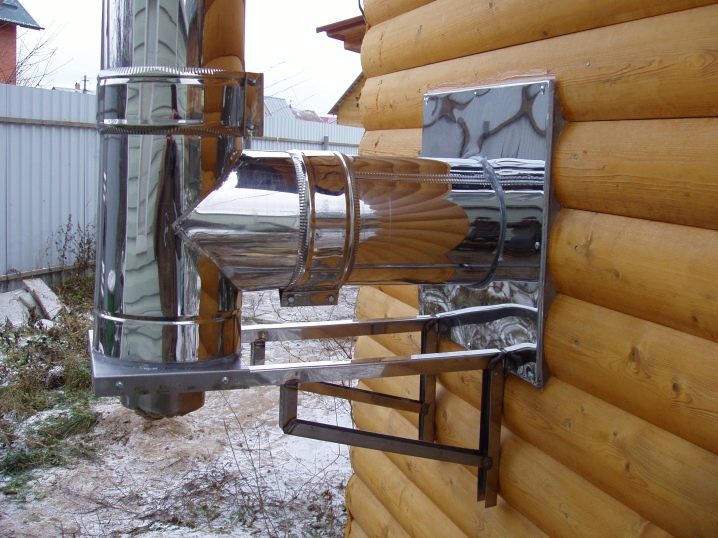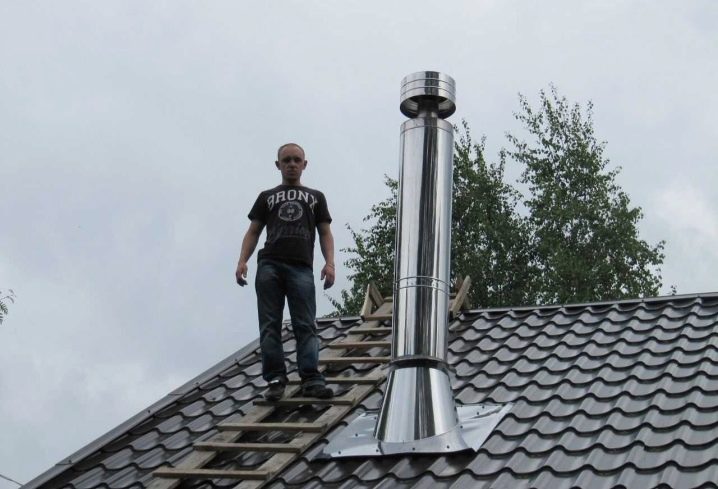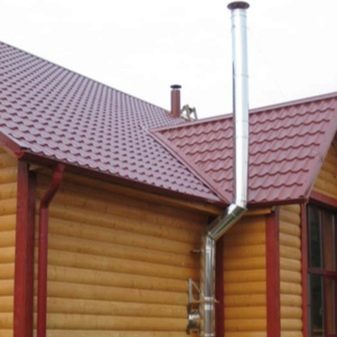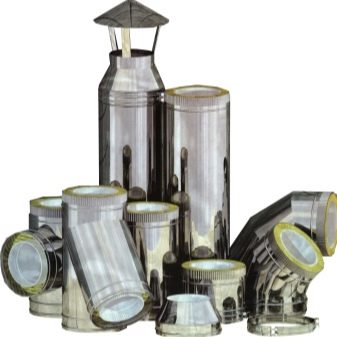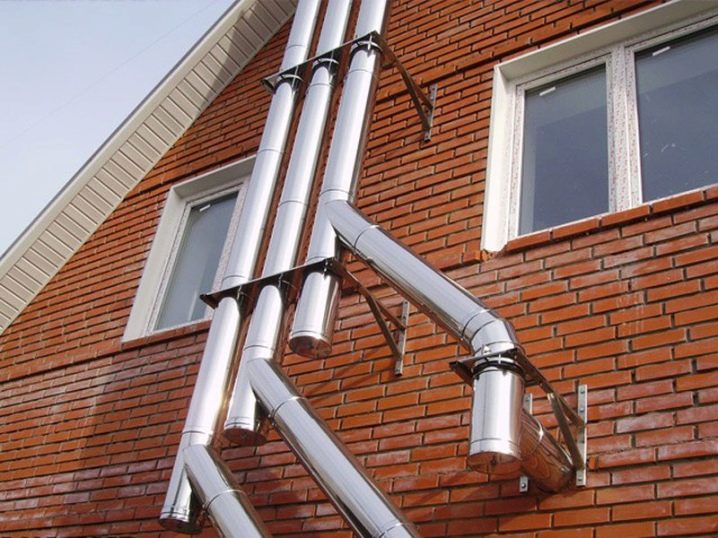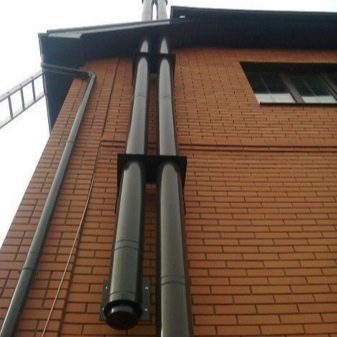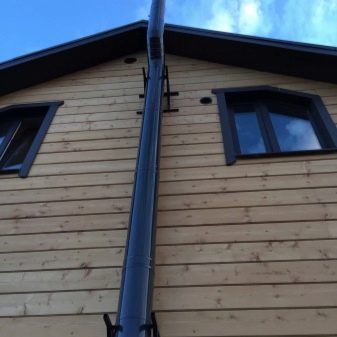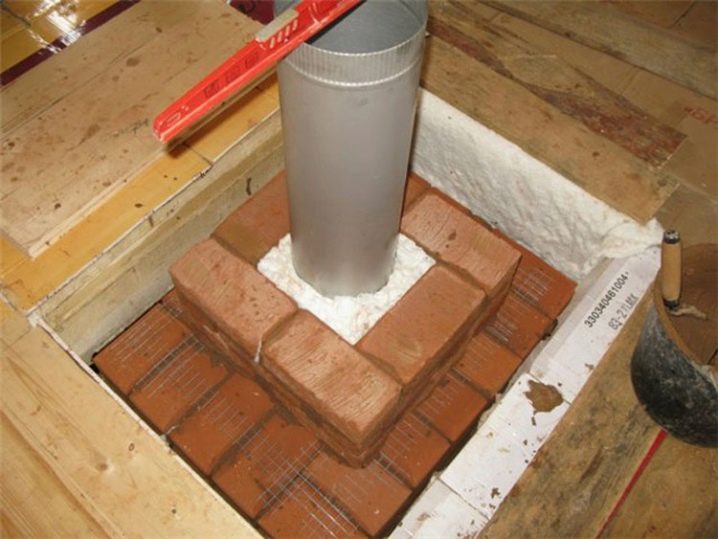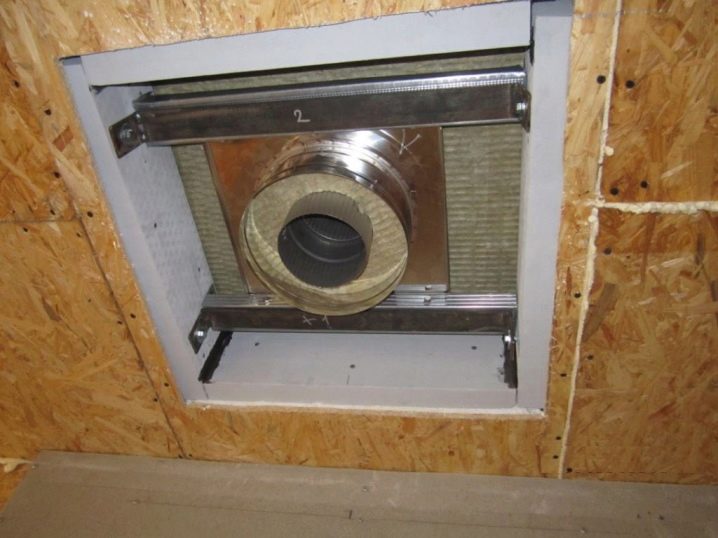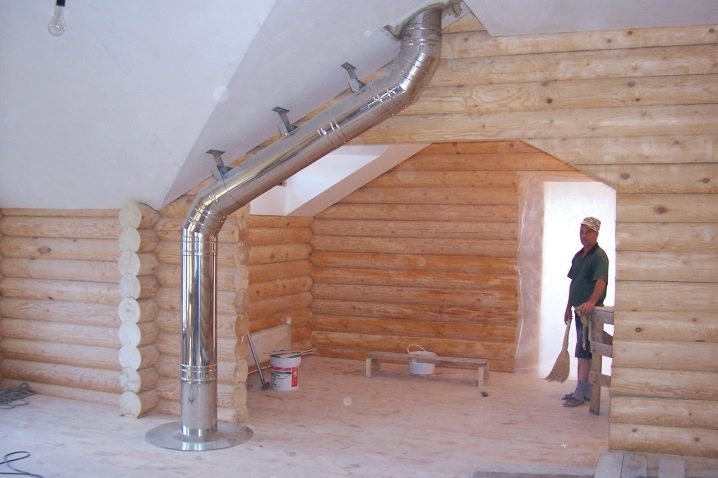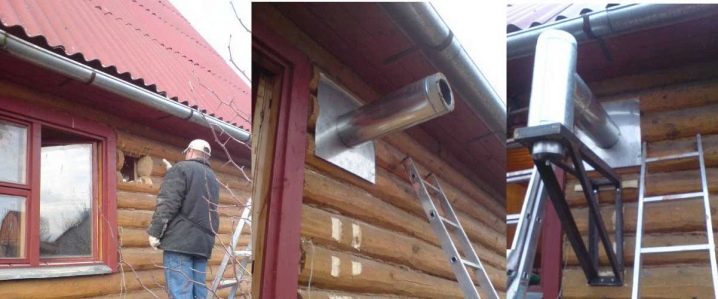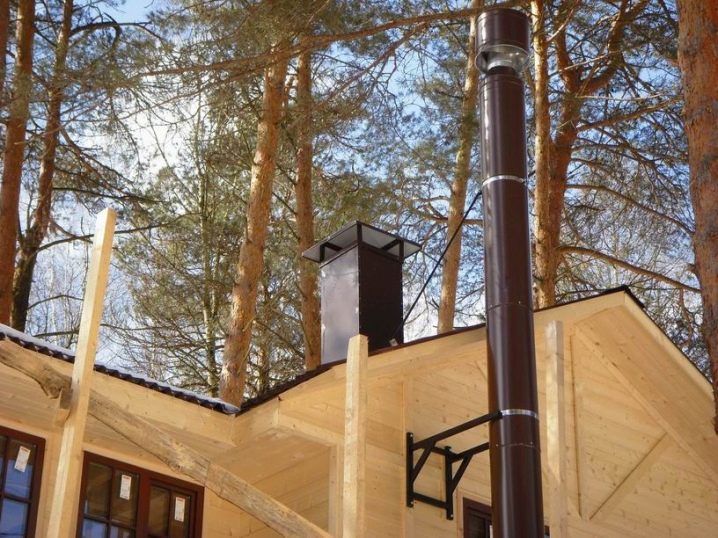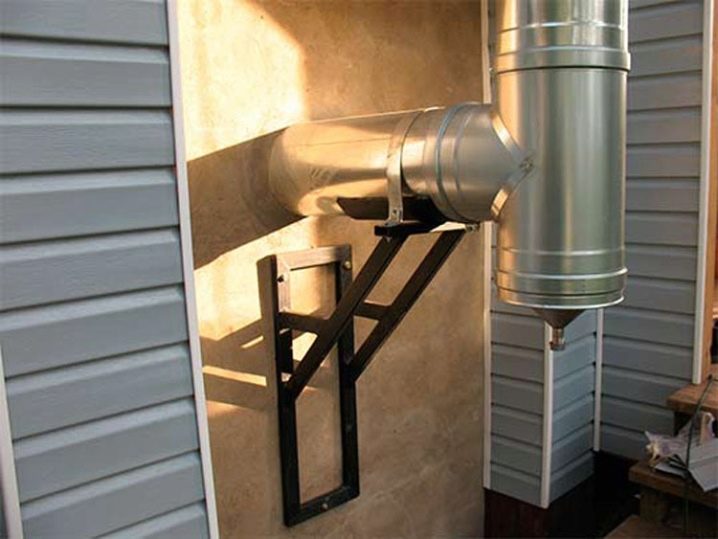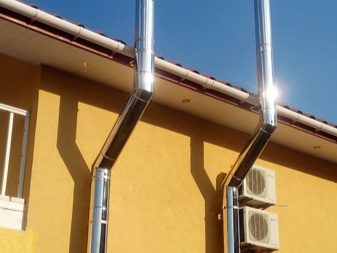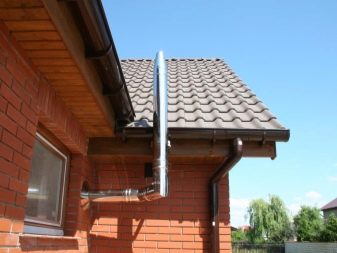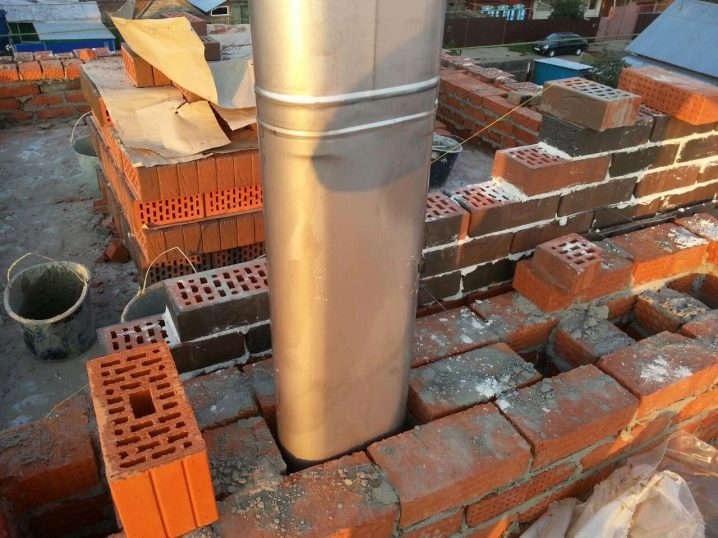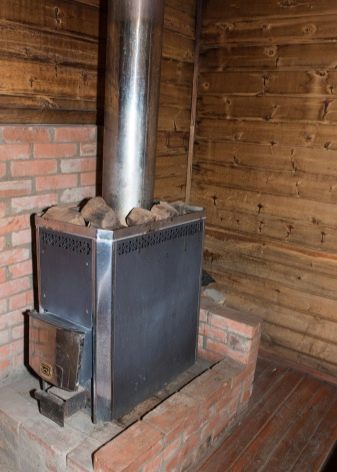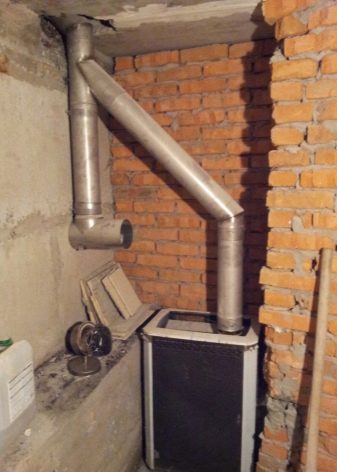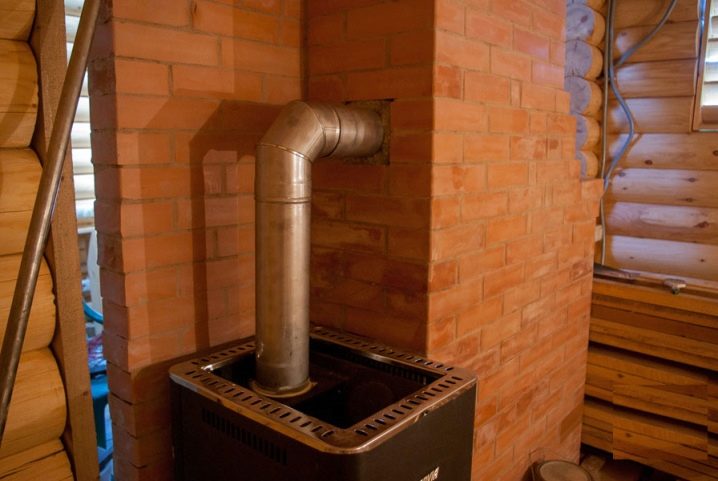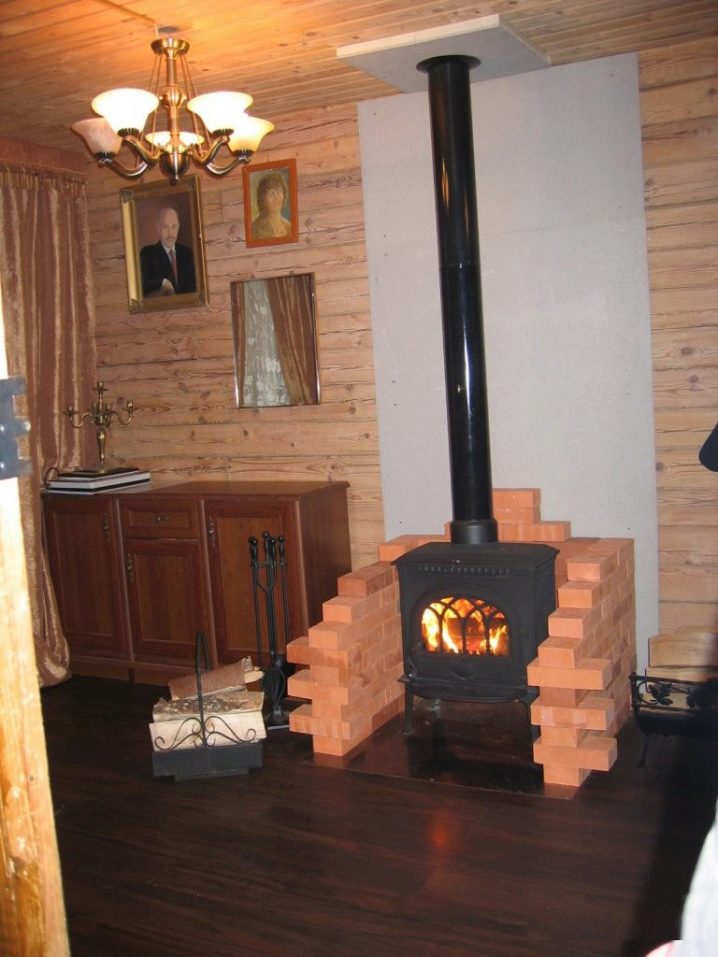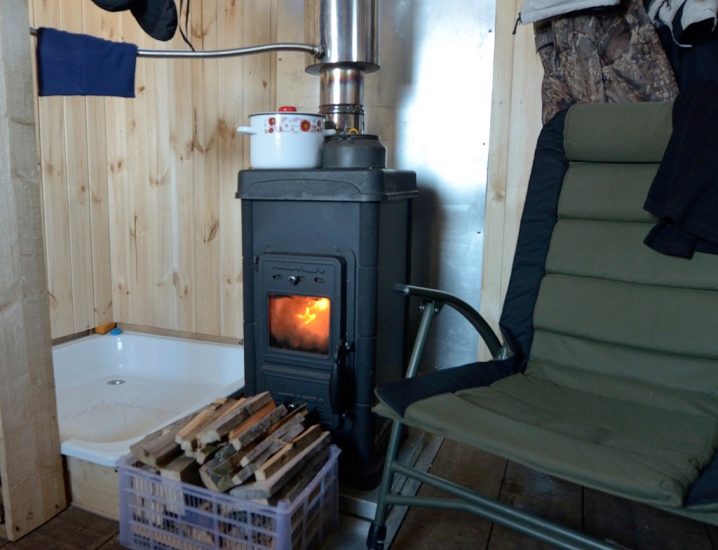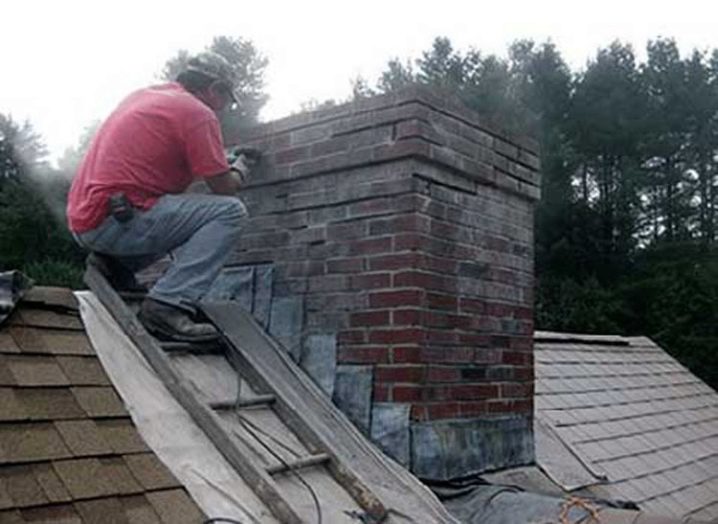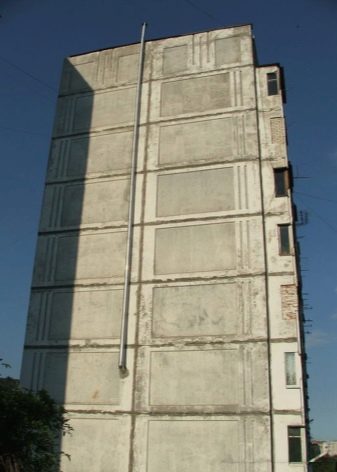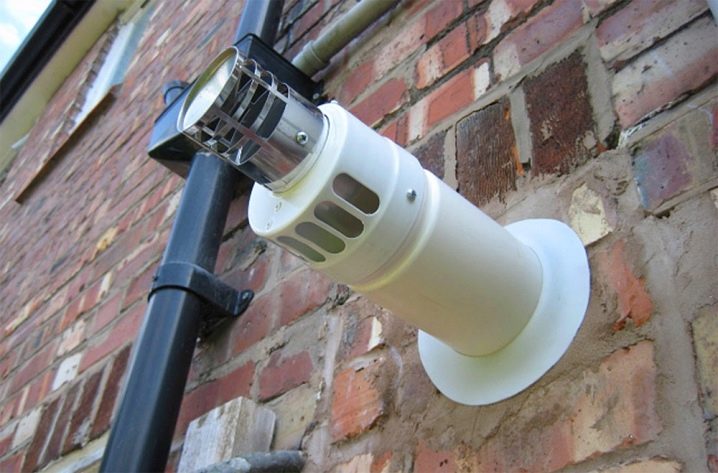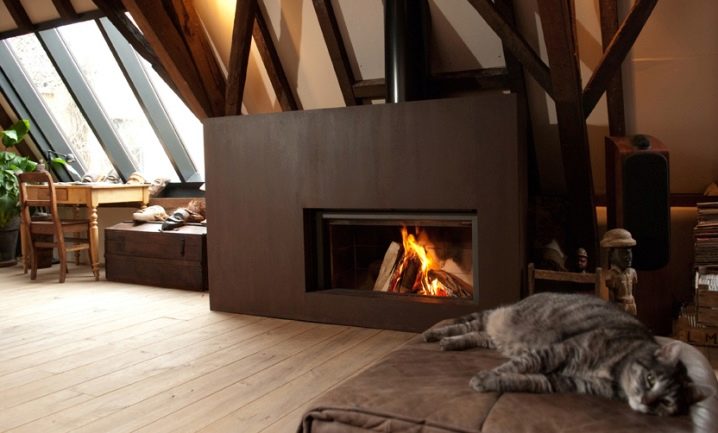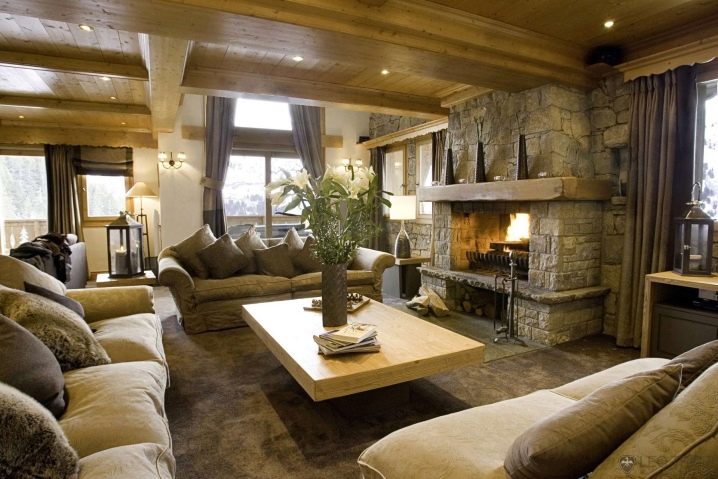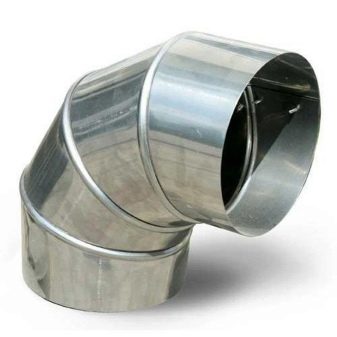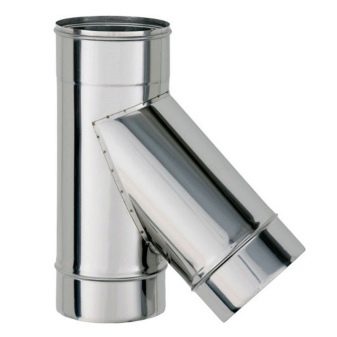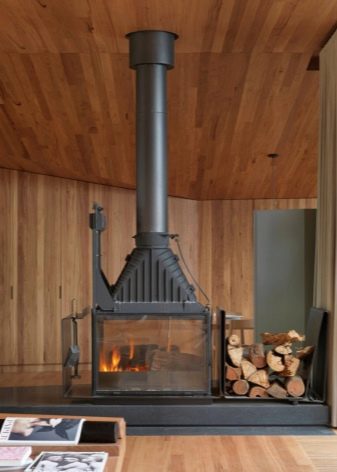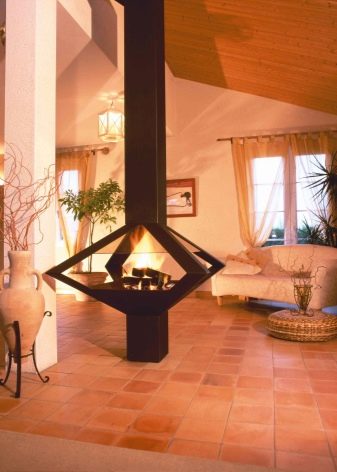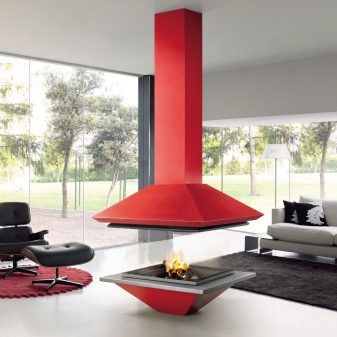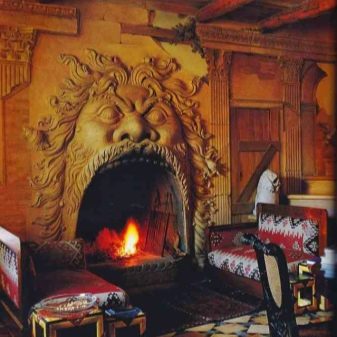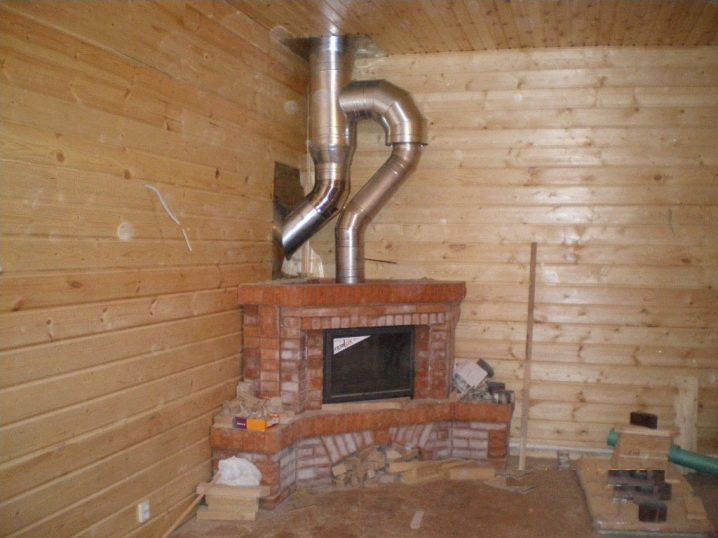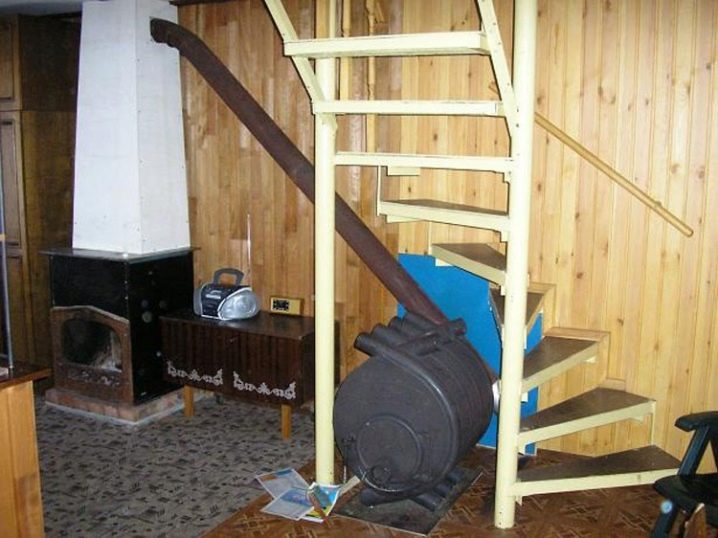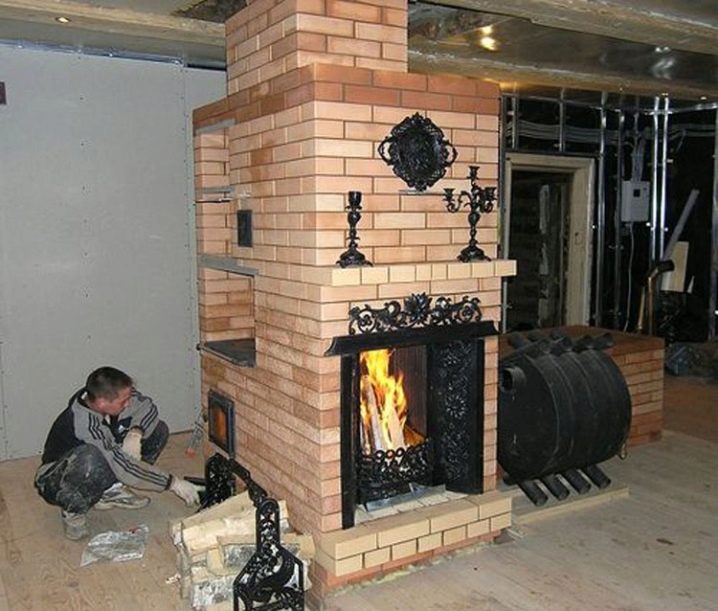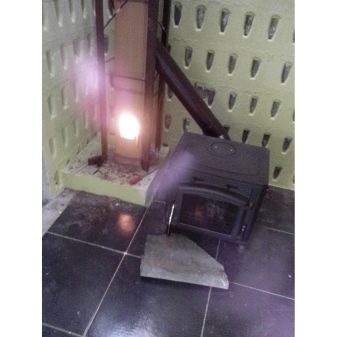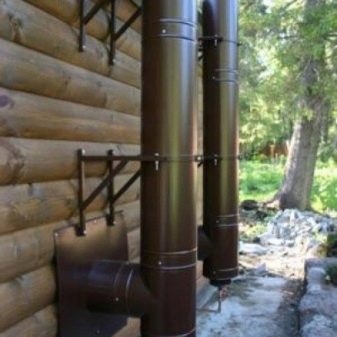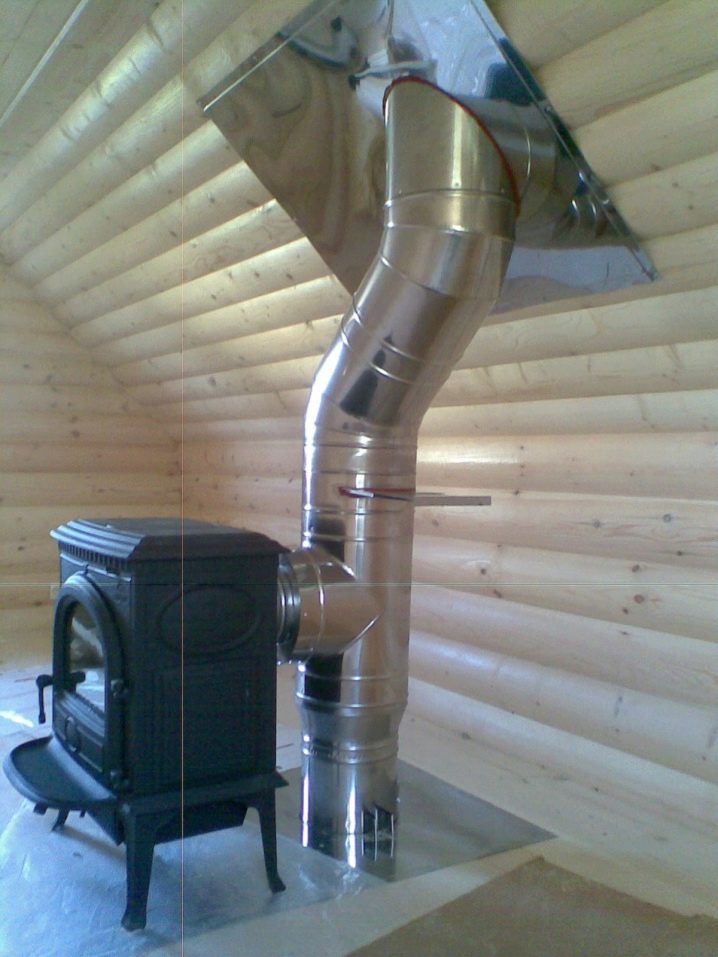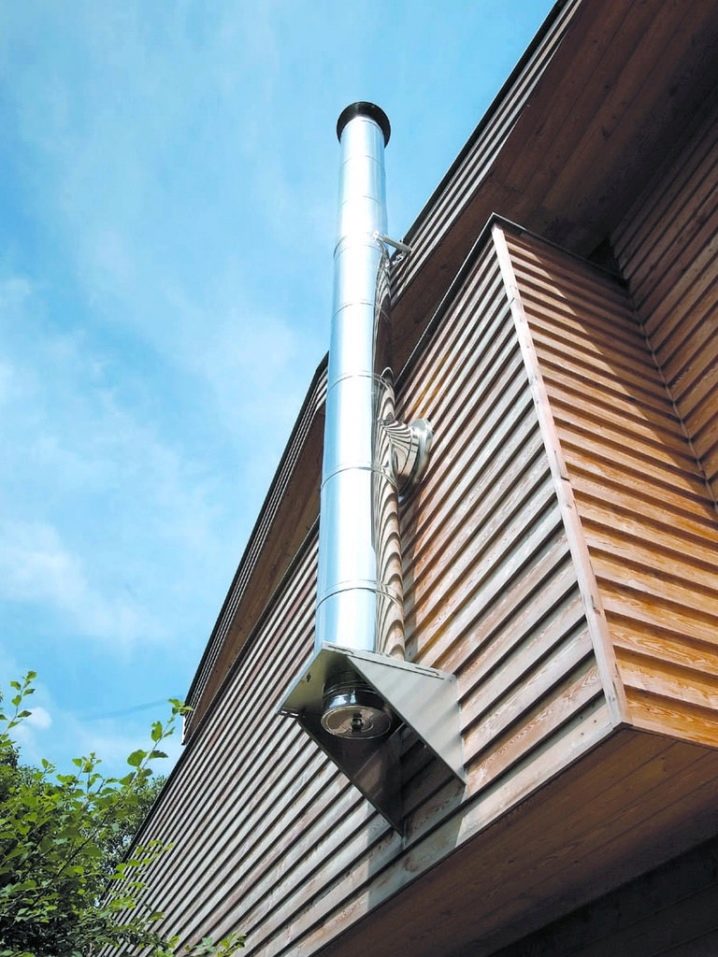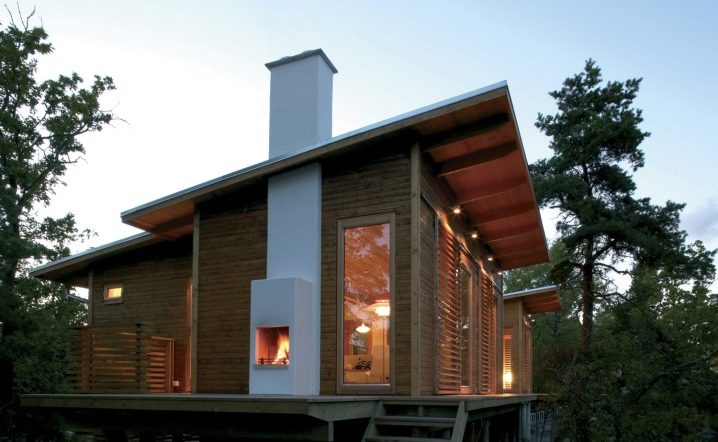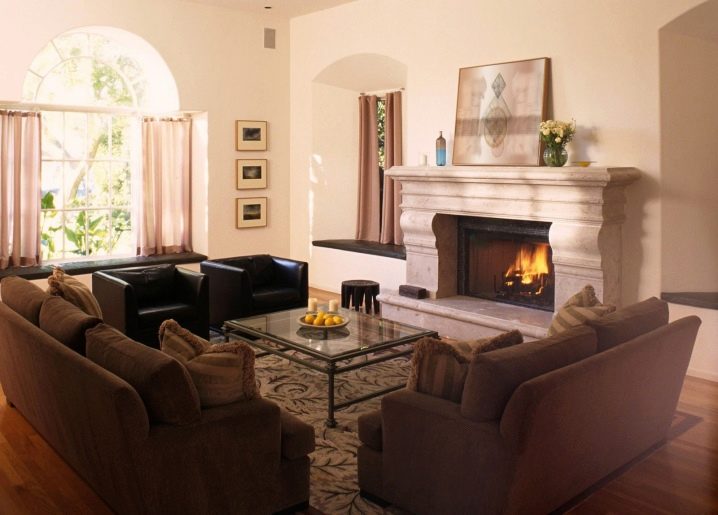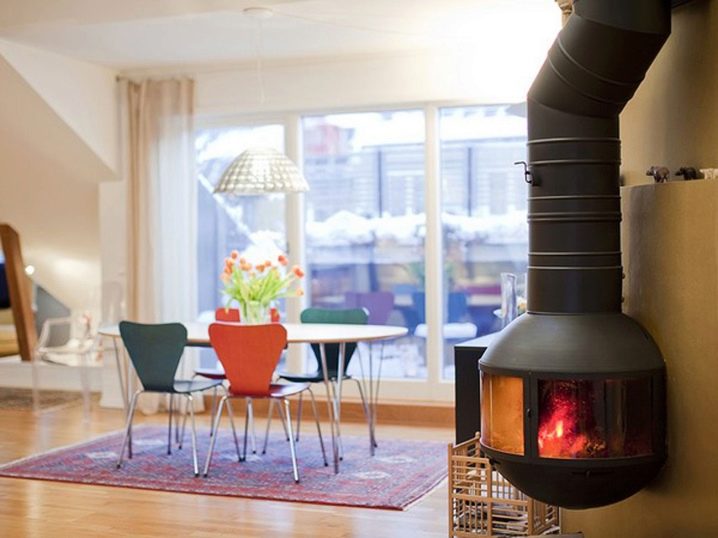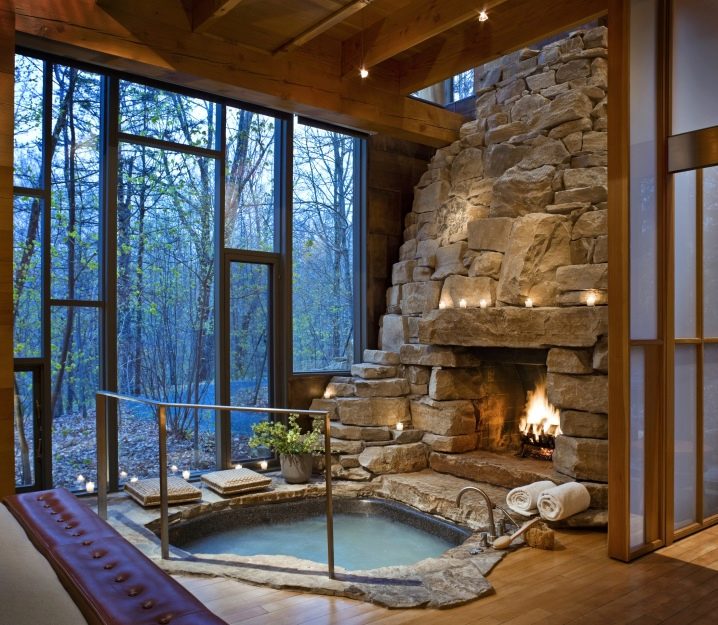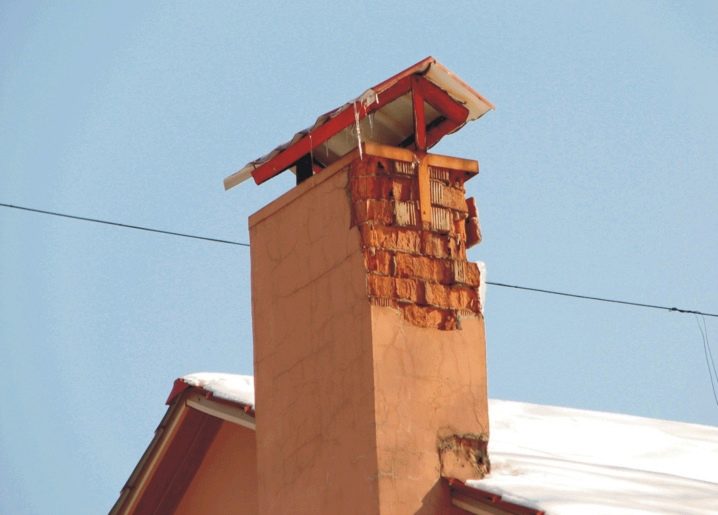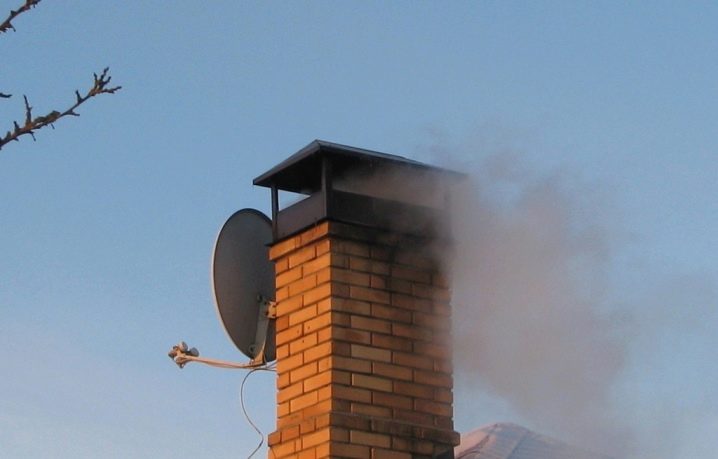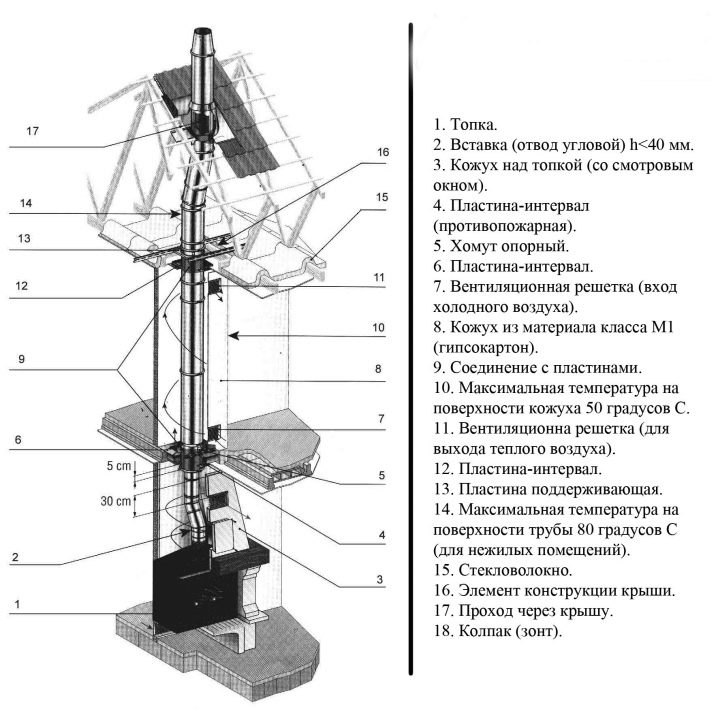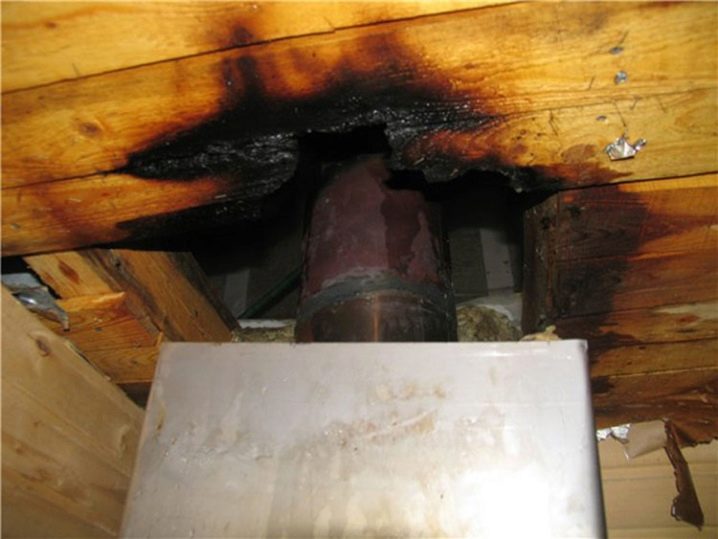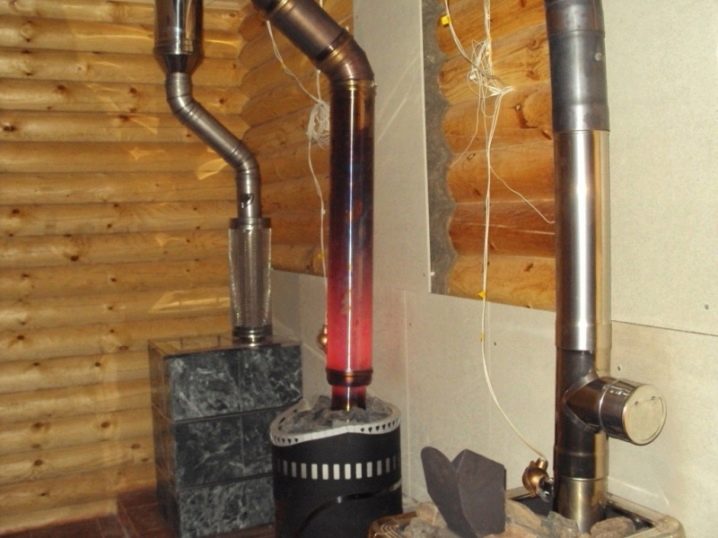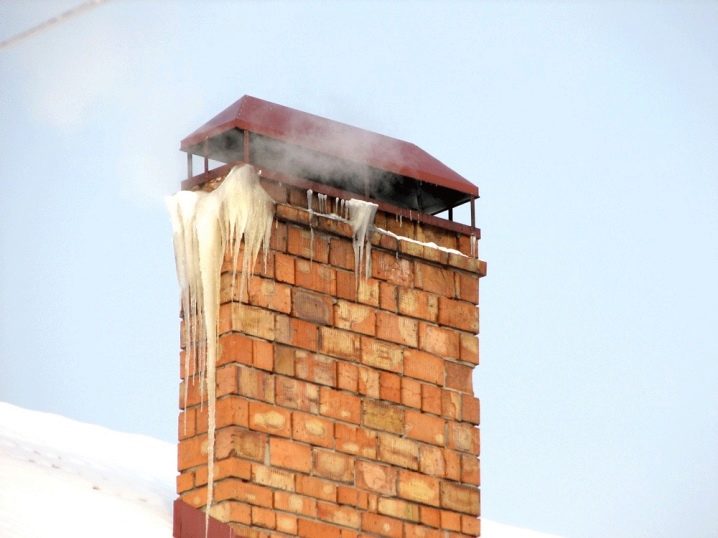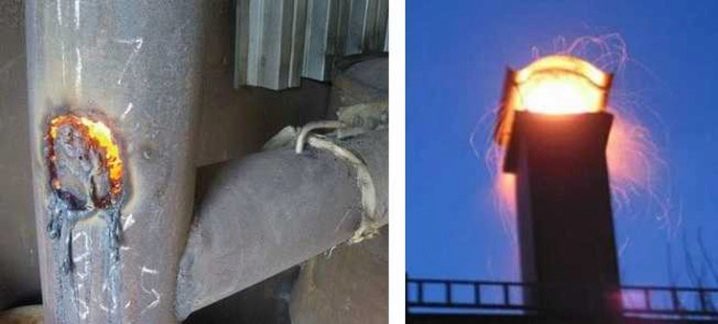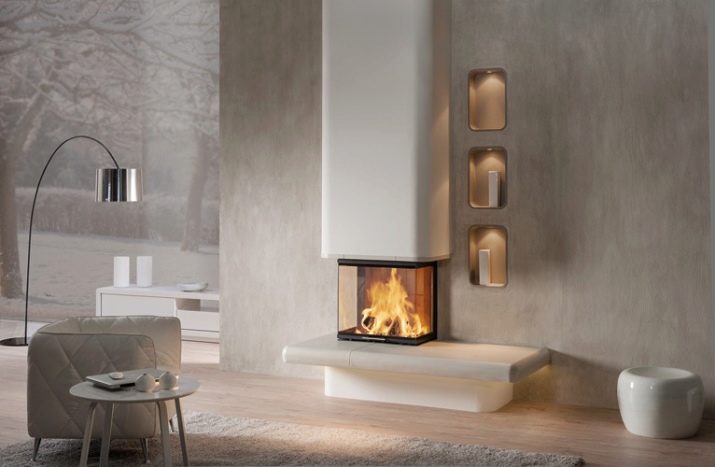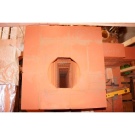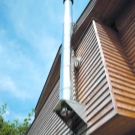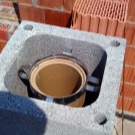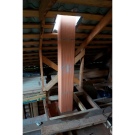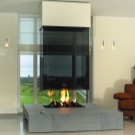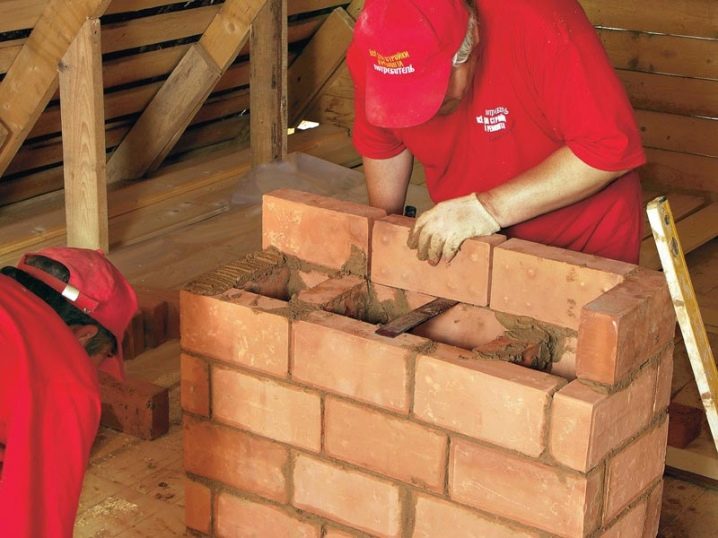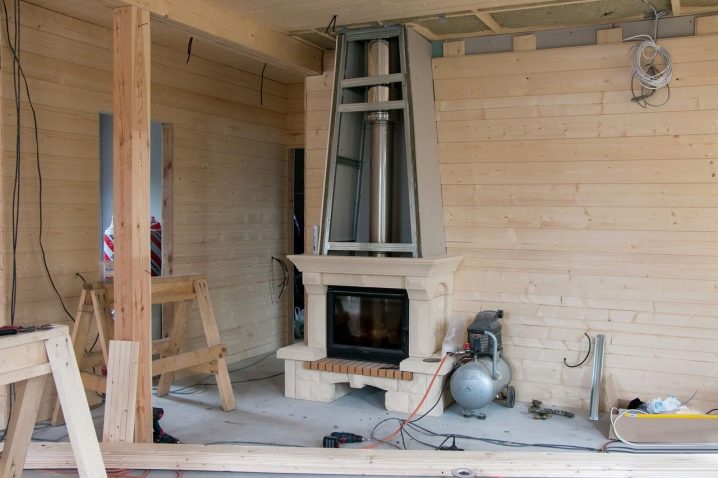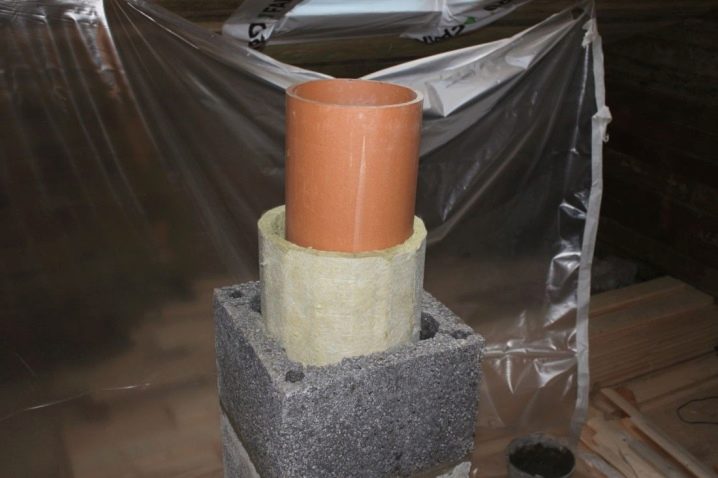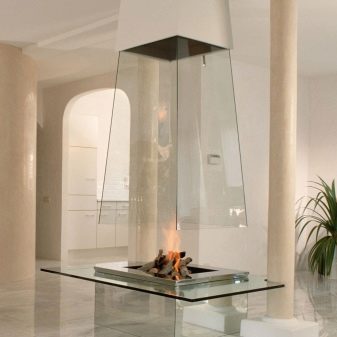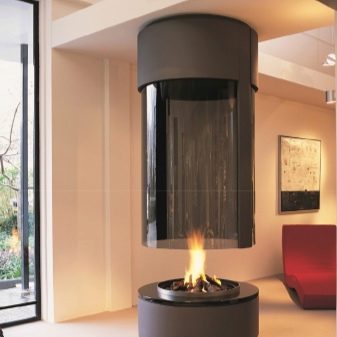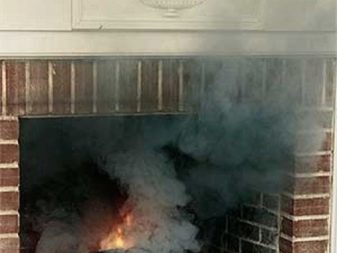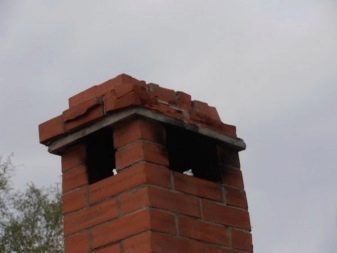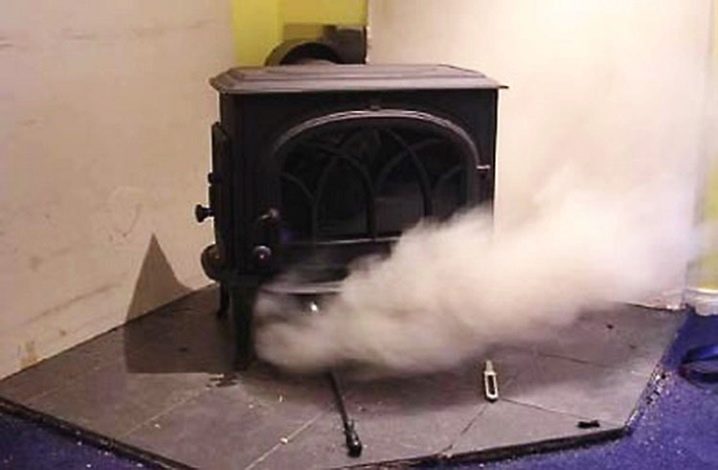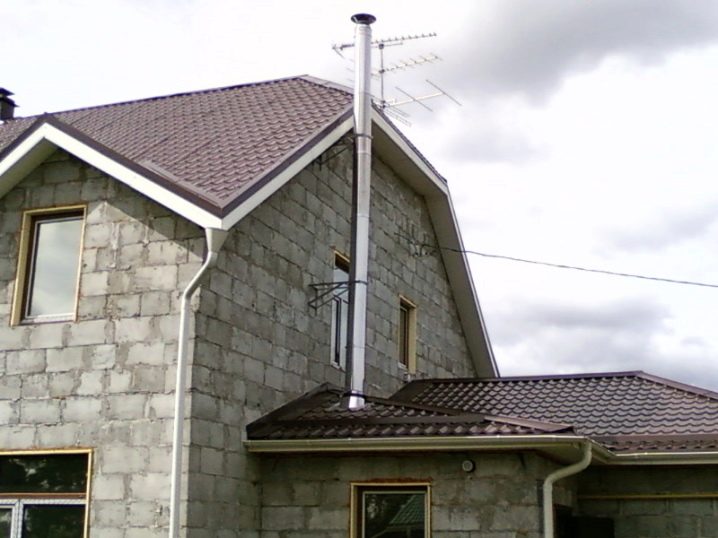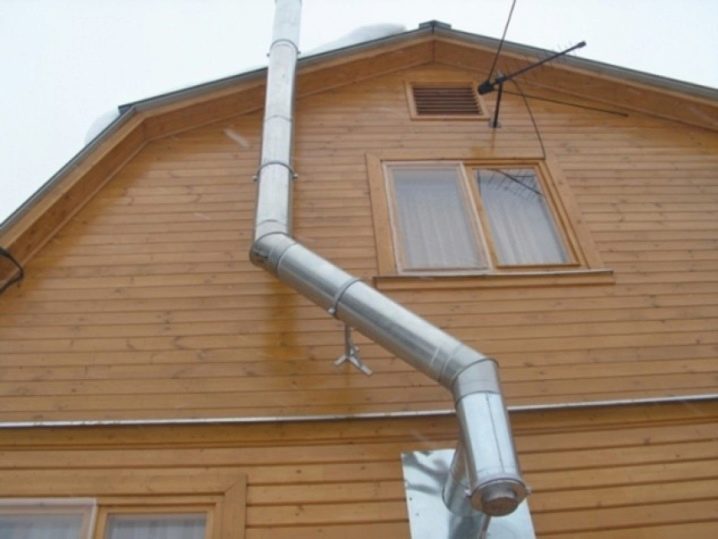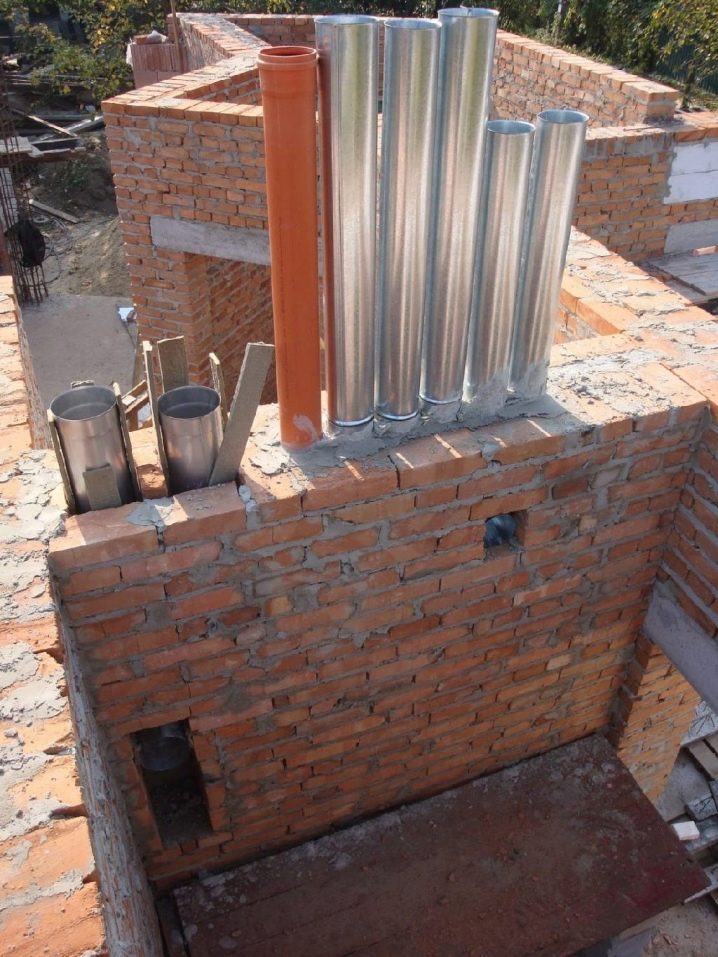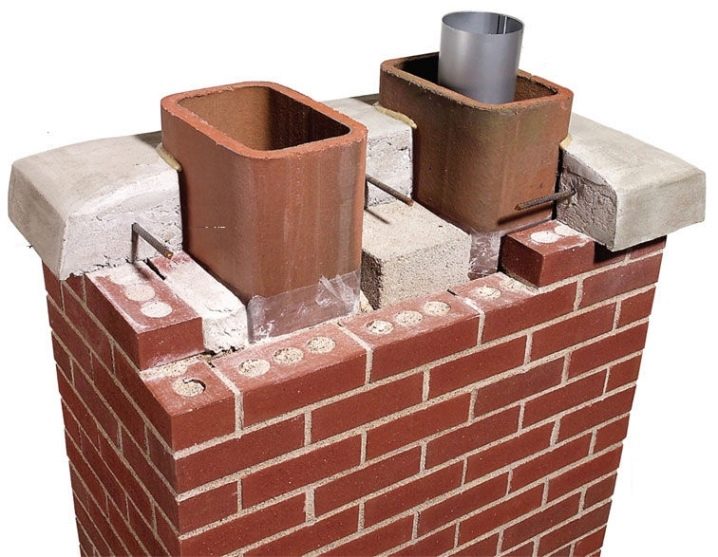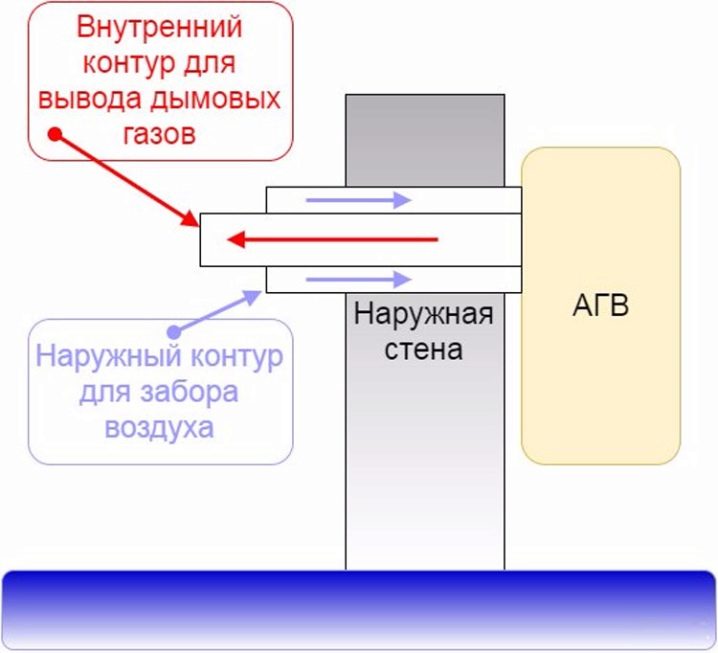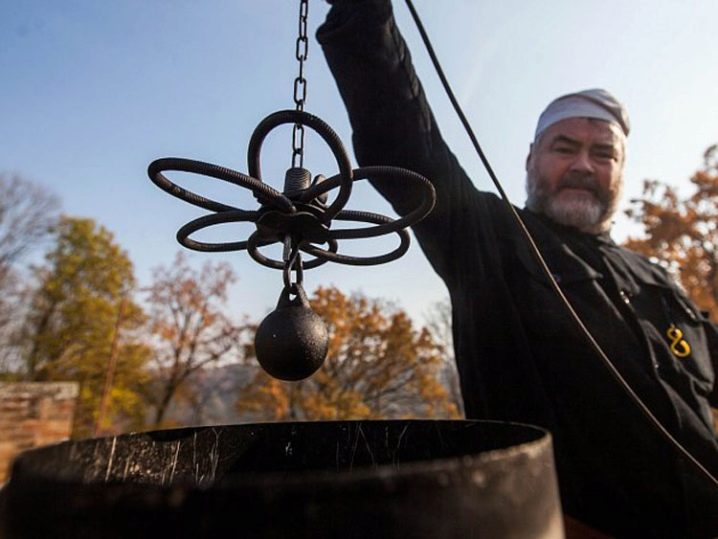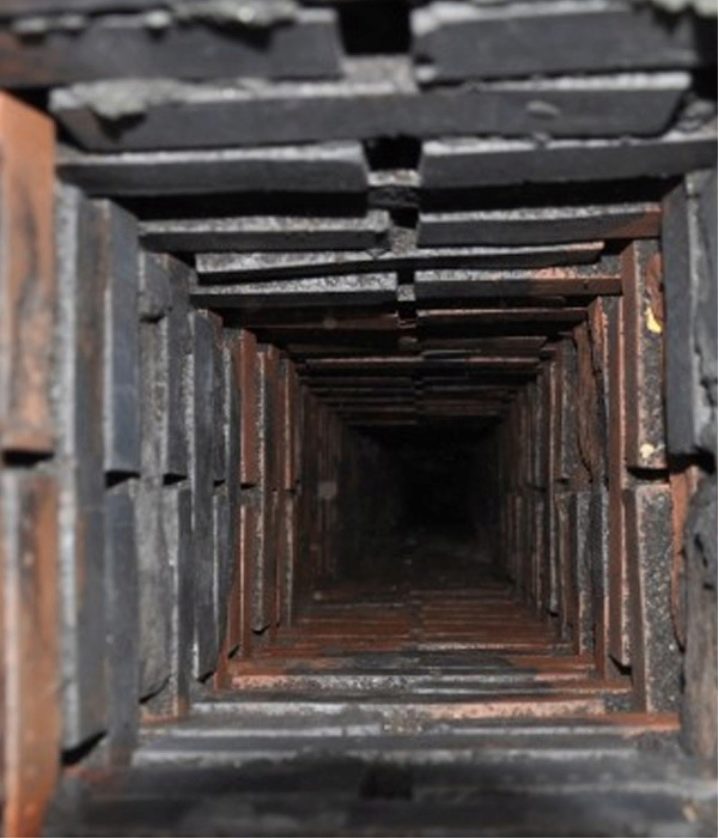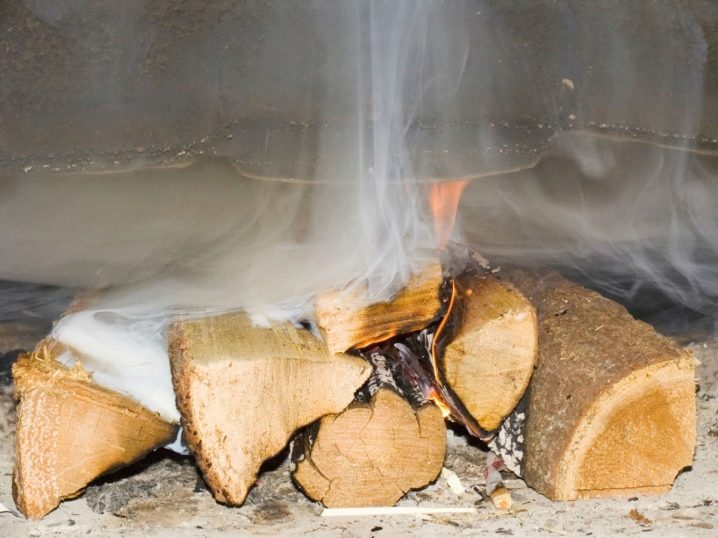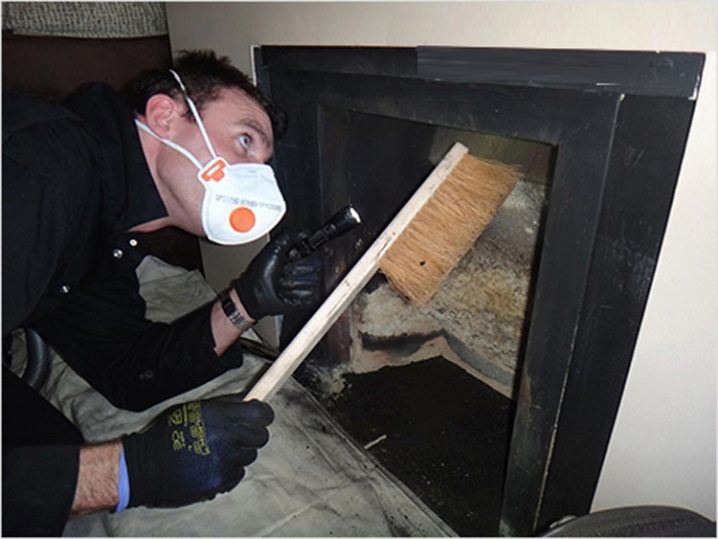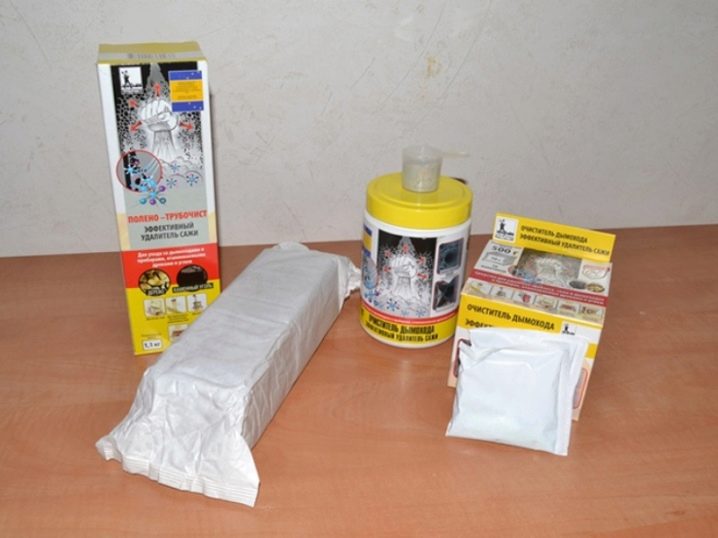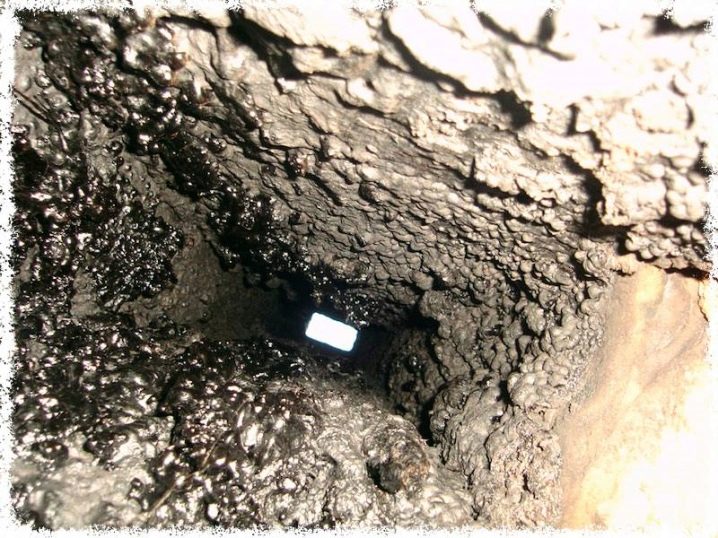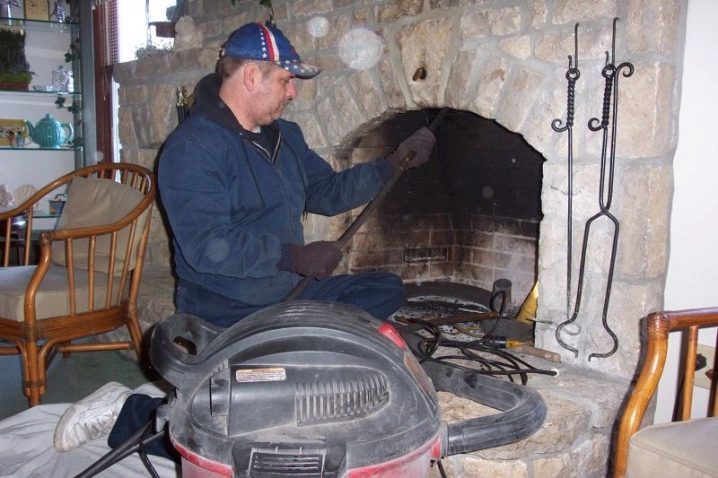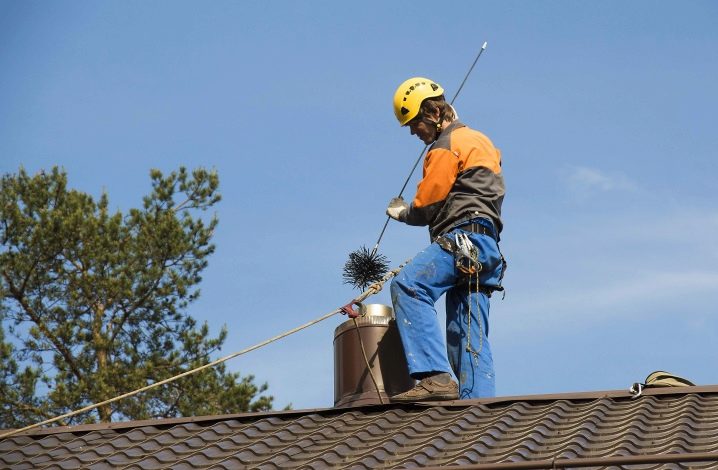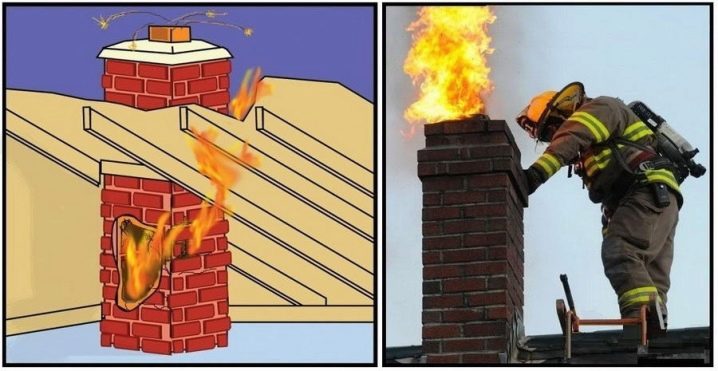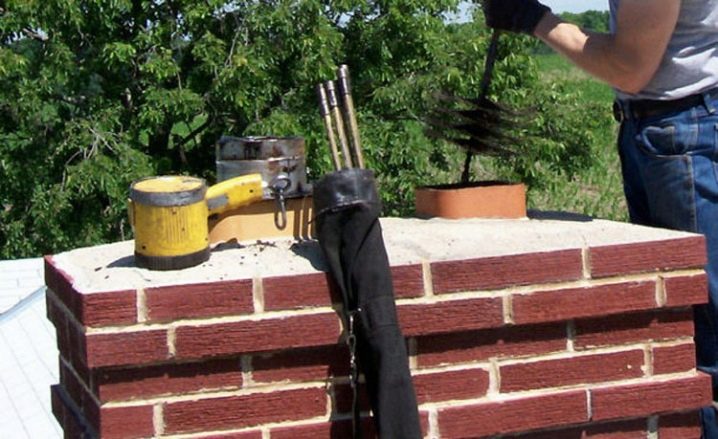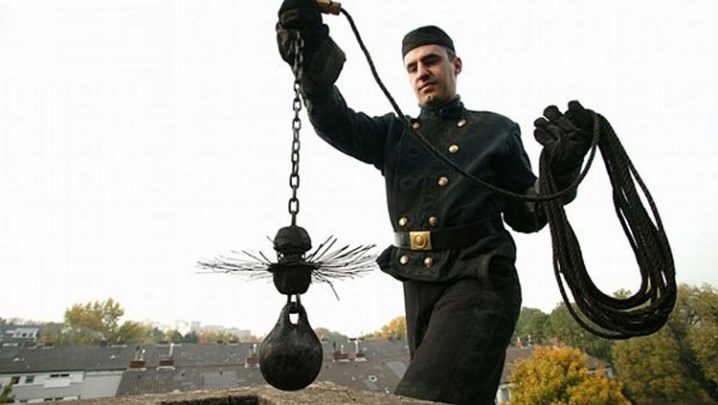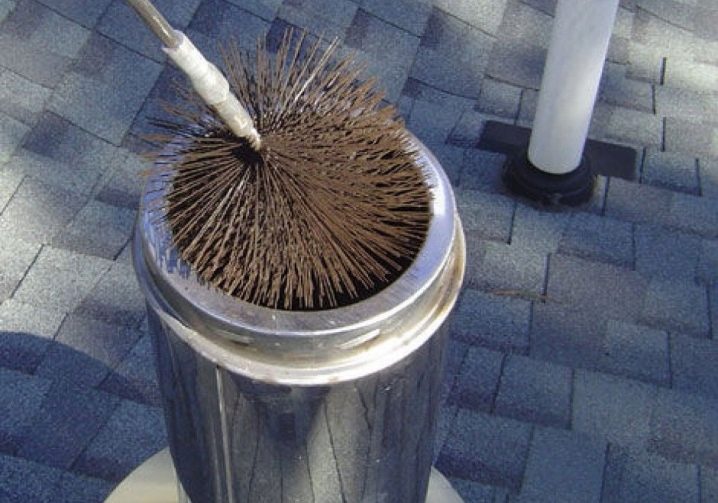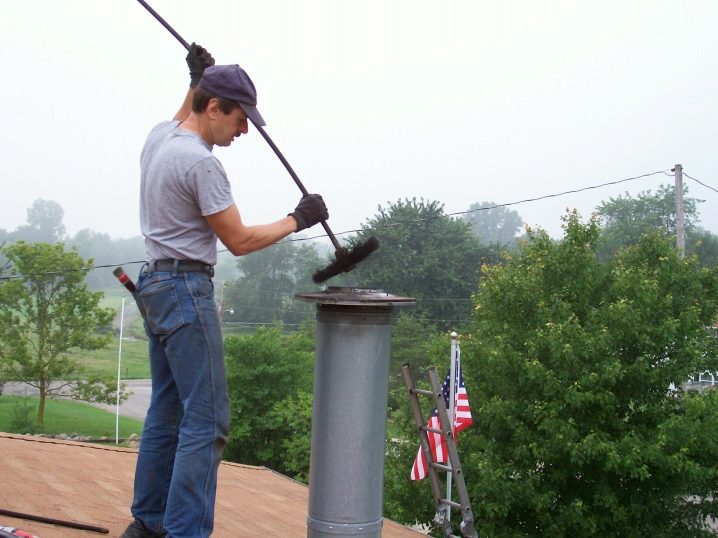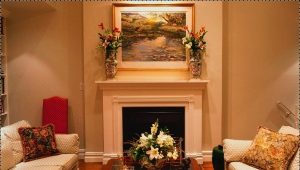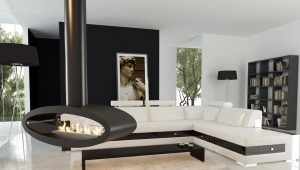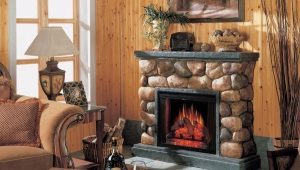Fireplace chimney
Fireplace chimney has the form of a sealed channel, which is located in a vertical plane and serves to remove the combustion products formed in the furnace, outside.
Varieties and materials
Pipes for fireplaces are of the following types:
- from brick;
- metal;
- monolithic or multilayer;
- decorative or very simple.
But in fact, it doesn’t matter: what form, what kind of material, prefabricated it is a system or not - nothing matters. One thing is important - decent ventilation of the furnace. And based on these considerations, for the chimney only that pipe is good, which provides the room with a fireplace the absence of the smell of smoke and the ignition of firewood from the first match.
If you are planning to install a fireplace with a chimney, then at least you should know something about the materials from which chimneys are being mounted.
Ceramic
These are chimneys characterized by resistance to relatively high temperatures. They have a large heat capacity and durability, but they cost a lot.Ceramic chimney is, as a rule, a three-layer construction with a ceramic inner pipe (refractory), a heat insulator and a concrete sheath. Heat insulators are non-combustible mineral wool, and in the concrete casing there are channels ensuring a decrease in the temperature of the outer surface and additional heat removal.
Steel
The chimney made of steel is a round pipe, stainless steel or galvanized, with insulation and with a warmed contour on the outside. The steel kit is quite simple to mount and weighs quite a bit. Metal pipes today are becoming more and more fashionable, and in order to connect a stove or fireplace to a chimney, they often use products made of black steel, because with them there will be no condensate at the source of fire and there is no corrosion of the pipe.
As the main riser chimney ordinary metal can not act. Inserts and open connection components are most often enamelled steel sectional tubes with a metal thickness of at least 0.5 mm. This is due to their corrosion and acid resistance and the calculation of the temperature in 450C, and briefly - 750C. As a rule, this is enough.
Stainless steel
The cost of a metal chimney made of stainless steel will be higher, but its service life will be great. In addition, this design is able to withstand a much higher temperature (up to 1200C).
If these are domestic sources of heating, then the thickness of steel is used in the range of 0.5-0.8 mm, sometimes 1 mm. At the same time, easy installation of the whole structure, its low weight and resistance to acids is of great importance.
The most acid-resistant steel pipes are 304, 316, and 321 steel. 430 is the same, but it is also the most affordable in price, and the weakest in acid.
The highest chemical aggressiveness of the release is obtained when the liquid fuel burns. Here it is worth mentioning the modular chimneys for fireplaces made of metal, which are single and double, insulated. They can be laid openly, without fear that a structure can ignite or worse - a burn.
It must be said that visually such pipes look quite aesthetically pleasing, do not require masonry, do not require a foundation. Double chimney with insulation suitable for installation both in the interior and outside.
Combined
It is also possible the option of combined insulated chimneys made of metal, when the inside is acid-resistant stainless steel from 0.8 to 1 mm, and the outer part is thinner and enameled.
Sandwich
Require special attention to require stainless steel pipe sandwich.
This is, above all, durability, excellent traction, due to the smoothness of the inner surface and minimal soot deposition.
At first glance, this is expensive, but it is unlikely that a brick construction, even considering the foundation, the mortar for masonry and payment for all the work, will turn out to be cheaper.
Coaxial
This is a double-circuit chimney having pipes of different diameters and the narrower of them is inside the wider one. So that the pipes do not touch, jumpers are provided.
Additional chimney
The safest solution could be a fireplace device with an added chimney. In this case, there will be no combustion products in the living room, even if the laying becomes leaking. And such a smoke removal system is installed not necessarily simultaneously with the construction of the house itself, but at any convenient time.
About the rear connection
In this case, a device in the form of a tee with an auditing channel and a condensate collector is connected to the chimney.
Exterior placement
Pipe with external placement increases the area of a small room. The chimney for the fireplace here is displayed through the wall at the heater directly on the street.
Oval chimney
The type of section at the chimney will also determine the thrust force in it. The most aerodynamic are round tubes. Square pipes are better than rectangular ones, and the oval chimney is rare, it is used only when gilding a rectangular channel of bricks.
Location
Chimney structures are mounted (mounted on top of the fireplace and continuing vertically), fundamental, that is, standing apart when the vertical flue duct with an offset location from the fireplace is on a separate basement and wall, with a flue channel inside the wall of the building.
Cases where the chimney may be more expensive than the fireplace itself:
- if the firebox is simple, and the chimney system is of the most modern and reliable. For example, ceramic chimney and fireplace insert "economy" class;
- if the fireplace is a stove or a kaminofen, and a stainless steel chimney, and even insulation more than 10 meters in height;
- if the old chimney canal is being reworked for a modern heating system (gilding or even a new chimney);
- if they are trying to arrange a fireplace in a house where they did not plan a chimney at all;
- if it is decided to build a detached modern chimney on the outside of the house;
- if it is decided to build a fireplace in the penthouse or on the upper floor of a high-rise building.
Design and dimensions
According to its design, a chimney is a vertical channel installed in the wall, whose height from the grate to the mouth is at least 5 meters. At the same time, a slight vertical deviation is allowed. If the chimney is too high, the thrust will be too high and the fuel will burn too fast, and the heat efficiency of the fireplace will have a negative effect.
In the case when the knee is provided in the chimney construction, the tee is also installed, otherwise in order to clean the chimney, it will have to be completely disassembled.
Each time the calculation of the design of the entire device will depend on the specific fireplace and the specific building, and therefore has individual parameters:
- pipe diameter and length;
- height and section of the box;
- power of the fireplace and instructions from the manufacturer;
- the number and availability of components;
- mount methods for the entire device;
- thermal protection and fire prevention;
- the use of passages associated with overlap and roof;
- elevations above the roof and location in relation to the ridge of the roof tip;
- the shape of the mouth in the channel and the location of the channels for smoke and for ventilation in the common shaft;
- thrust in the channel and some problematic elements of the whole structure, as well as the conditions of its operation.
When two in one is bad
You may decide to combine two fireplaces into one chimney. According to the theory, this can be done, but in practice this solution will require compliance with many additional conditions:
- you will need to sheathe the chimney;
- choose the best chimney for design and height;
- increase the cross section in the smoke channel;
- install plugs to completely block the smoke channel;
- when firing fireplaces to observe the order;
- adjusting the fire in one and the other, which is not so easy to do.
Simultaneous firebox with several fires and one chimney is always a problem:
- with chimney construction;
- with roofing sinkers;
- with connection options;
- with air exchange in the room;
- with economizer;
- with the compensator of draft and maintenance of burning;
- with ventilation;
- with a side exit that can reduce cravings and increase the formation of condensate.
There will be so many questions that it will become clear - the best solution for two fireplaces will be this: one chimney - for one fireplace, and two fireplaces and chimneys will need two.
About fastening
Proper fastening for the chimney is very important. To fix the pipe, the outer contour must be crimped with a special clamp and fixed to the rivets. After that, the clamp must be fixed on the ceiling with a special angle and fixing bolts. In this case, the main weight of the chimney will not have to insert a fireplace, and on the clamps and corners attached to the ceiling.
Even when the chimney for the fireplace is arranged in compliance with all the rules, a certain amount of water can still get into the chimney. Everything will depend on the cross section of the chimney and the size of the “skirt”, which have an umbrella or deflector installed above the chimney.
How to choose
Definitely answer the question, what to choose a chimney, it is difficult. Here there is a main rule: the choice of the chimney in no case should not be based on its cost. In this case, it is not important. You need to push off from the following things:
- on the selected type of heating;
- on the type of unit you chose;
- on how will be the installation of the chimney. If you invite for this specialist - this is one thing, and if you rely on your own strength - it is quite another, then the work should be up to you;
- Much will depend on the intensity with which your heating system will be operated.
Calculate everything and give a correct assessment of your knowledge and experience in the device of the chimney, and then make your choice.
Conclusion
In any case, the best chimney is the one that will allow your fireplace to function safely, efficiently and economically. And if a brick chimney is quite suitable for your unit, then you definitely do not need that ultramodern and trendy chimney, which you read about on the Internet for such rave reviews. It is clear that everyone will decide this question at their own discretion, but you should always remember about the safe operation of your home for both you and all others.
Proper laying and installation
The fact that the chimney must be properly installed is even more important than installing the fireplace itself.
Errors in this case are unacceptable because because of them not only the equipment can break, but there can be a danger of carbon monoxide poisoning and even fire.
In order to do everything correctly, the installation scheme must first be developed. For example, this:
Requirements for chimney and options for its arrangement
The requirements for the chimney are well-defined: to organize the discharge of combustion products outside the room.
This involves heating the structure to very high temperatures and its contact with aggressive media (chemicals that were formed during combustion).
Another important problem is the formation of condensate as a result of temperature differences.
Therefore, in order to connect the chimney, materials are needed that are sufficiently strong, and depending on their choice, the chimneys for the fireplace are divided into the following types:
- from brick;
- of steel;
- from ceramics;
- from glass.
Options
Of brick
This chimney is a brickwork. In terms of costs, this option is considered the most budget, but here it is not very effective.
Of steel
The chimney made of steel is a round pipe, stainless or galvanized, insulated and having an external contour. The steel pipe is quite simple to install and weighs relatively little.
From ceramics
To mount such a structure is better to entrust a professional with experience of such work. As far as the construction of such a chimney is difficult, the insulation is also excellent. Such chimneys can last up to 30 years or even longer.
From glass
This version of the chimney is considered the most expensive and difficult to install, but also visually the interior with this design looks very impressive. Glass chimneys are not afraid of neither corrosion, nor heating, nor moisture, and this is their undoubted advantage.
5 most common mistakes
The category of errors that are made most often includes the following points:
1. Incorrectly choose the chimney pipe by configuration, which leads to heavy kindling of the fireplace, weak flame and smoke in the room due to weak traction.
2. If the chimney is selected of insufficient height, then sufficient thrust will not be ensured. The height of the pipe from the grate to the top of the roof should not be less than 5 meters. Above the pipe - and stronger thrust.You can reduce the diameter and increase the height, then the volume of warm air will increase, and it will cool down more slowly, which will positively affect the load.
3. If the deviation angle from the vertical exceeds the allowable, the thrust will also be bad, because the best thrust is in a straight vertical pipe. Any bend or tilt of it will worsen, and the horizontal section - and even more so. If the direct chimney does not work, then the offset should be done using inclined elements, and the angle of inclination should not exceed 45.
4. Another mistake is the wrong definition of the section. Reducing the diameter of the chimney chimney below the permissible rate is not allowed, more - it is possible, but also not by much.
5. Wrong choice of material for the chimney, and then it turns out that the properties of the selected material does not correspond to the conditions of its operation.
Special cases
To build a chimney on the second floor means to mount it using a sealant either through a hole in the supporting wall or through a balcony, if there is one. Here is the best way to use a coaxial pipe as a chimney.It is two-circuit, that is, the internal circuit serves for the withdrawal of waste substances, and the external one for air intake, as in the diagram:
In the case of designing a chimney for a fireplace with its simultaneous connection with a stove, adhere to the optimal height and design of the chimney, with an increase in cross-section and with the installation of several dampers, so that you can close access to smoke. However, according to experts, the fireplace chimney is still not to be connected with another heating device, including a stove.
How to clean soot
Safe and comfortable with a fireplace in the house will only be subject to good traction in the chimney. And it largely depends on his condition.
There are several cleaning methods for chimneys: there are folk people that people have used for centuries, and modern ones by scientific research. These methods include:
People's
In the old days, chimneys were cleaned with aspen wood, which are capable of generating heat in the firebox up to 1200C. Under this influence, soot becomes loose and burns, and all that remains of it, flies with the smoke into the chimney.
Before cleaning with this method, you need to be surethat such high temperatures will not harm your chimney, since avoiding destruction or fire in case the chimney cracks, for example, will be difficult.
Back in the old days, another method of chimney cleaning was used: dried potato peels were burned, when burned, substances were released that could loosen soot, and then it was easily removed from the cleanings. But national methods will not always be able to help, and in case of a strong blockage it is better to turn to chemistry.
Chemical
Today you can find various cleaning products for chimney cleaning in the furnace farm shop. It can be powder, tablets, liquid or special pellets, logs and briquettes that are simply placed in the furnace (even with firewood, even without them) and burned. More information about the use of each of the chemical agents is all painted in the instructions attached to them.
The most convenient of all chemical agents that clean the chimney are considered to be cleaning briquettes. They heat the fireplace for about two hours, so that the substances that hold the soot in the chimney are destroyed, and the remaining fines are carried out, like the smoke, into the chimney.
If there was a large blockage in the pipe, it will fall down, and therefore, after servicing the chimney, an audit of the entire chimney space is necessary, for which it has special doors.
Mechanical
This method is the most effective and will cope with the most serious blockage that occurred due to the strong narrowing of the lumen or due to the fact that some rubbish fell into the pipe.
Chemistry here may not be able to change anything.
And to operate such a fireplace is dangerous not only for health, but also for life - all deposits formed inside the chimney can catch fire, not only smoke can escape from the chimney, but also sparks, and even fire.
If the weather is dry, there is a high probability of fire, so if there is no traction, and the room is filled with smoke, mechanical chimney cleaning will be required using special tools and fixtures.
The tools designed for the mechanical cleaning of the chimney for the fireplace from soot and soot include special scrapers, brushes, brushes, different in size and configuration, brushes in the form of cores, in order to break through a dense blockage.
All this is on sale, but much and most can be done.
Often it is not necessary to clean the chimney, but if the soot deposit inside the chimney exceeds 2 mm, then it is time to work as a chimney sweep.
